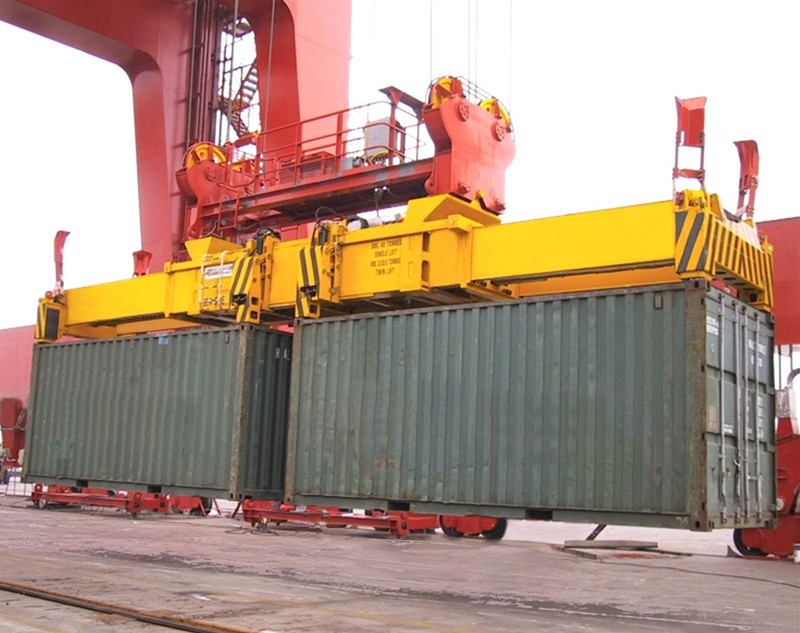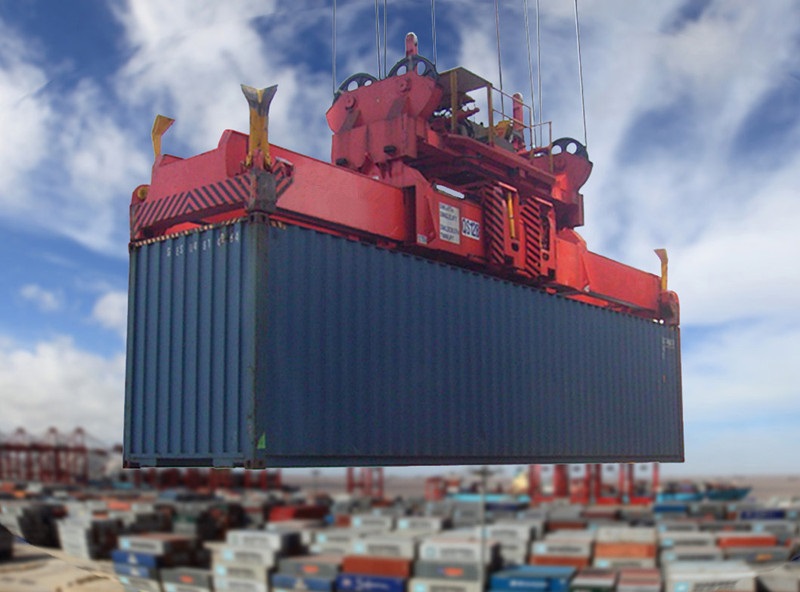News
Analysis of the common accidents of the opening and closing mechanism of the container spreader
Publisher: Release time:2021/3/11 9:44:57 Click:46
1 Related background
Safety is the highest priority in terminal loading and unloading operations. Only when safety is ensured, can efficiency be improved. As the most severe and frequently used part of port machinery equipment, container spreaders are self-evident for their safety and reliability. The opening and closing mechanism of the spreader is the most important safety part in the container spreader, and its criticality is even more important.
With the increasing automation of loading and unloading operations at the terminal, higher requirements have been put forward for the safety of the opening and closing mechanism of the spreader. In traditional manual operations, the driver can observe some abnormal situations through accumulated experience in the past, make corresponding judgments and take corresponding measures, so as to avoid some safety accidents.
Different from the traditional operation mode, in the automatic operation process of the automated terminal, the judgment of the opening and closing status of the spreader is completely dependent on the opening and closing feedback signal. If the opening and closing mechanism feedback signal does not match the actual situation, it is difficult for the crane to judge the opening and closing. The abnormal state can only rely on some other detection methods, such as the detection of the sway of the spreader, the obvious deviation of the weight sensor value, etc., but these detection methods are difficult to be completely reliable, and the most important thing is the accurate feedback of the opening and closing signals. .
2 Common failures of opening and closing mechanism
2.1 Analysis of accidents caused by abnormal opening and closing signals
In actual operations, there have been many containers falling due to problems with the opening and closing mechanism of the spreader. Let’s analyze the causes of the falling container:
(1) The twistlock opening and locking actions are not in place, but due to electrical faults or imperfect opening and closing safety interlock settings, the opening and locking signals are fed back to the main PLC through the vertical cable, which causes the box to fall off during the lifting process. There is such a situation, when a rotary pin unlocking limit switch is in a fault short-circuit state, but the electronic control system cannot feedback this fault information. When the spreader performs a locking action, the spreader normally feeds back the locking signal. When the unlocking action is performed, due to Some faults or box eye deformation, the pivot pin did not unlock smoothly, but the unlock signal of the pivot pin is also fed back to the electronic control system, then the actual state at this time is: the three pivot pins of the spreader are in the unlocking state, and one pivot pin is in the unlocked state. The pin is in the locked state, but the total unlock signal is fed back to the crane's main PLC and the lifting is allowed. At this time, if the driver does not react in time, it will easily cause a box drop accident.
This is the imperfect design of the electronic control system of the spreader, and there is no safe logic protection of the opening and closing signals.
Each individual limit switch for the detection of the unlocking and locking position of the pivot pin should prevent any malfunction caused by the short circuit of the switch. In this case, it is usually necessary to focus on the opening and closing logic in the program to protect the unlocking limit. The position and the locking limit are mutually restricted. The unlocking signal will only be sent out when the unlocking limit is sensed and the locking limit is not sensed, and the indicator light will act accordingly. The locking signal is the same. Only in this way can the safety of the hanging box be guaranteed to the utmost extent. In addition, for the judgment of the short-circuit state of the limit switch, if the spreader electric control system does not use a PLC controller, the electrical circuit is designed through this principle, and the relay control can also be realized.

(2) The hinge pin driving mode of the spreader adopts a single rod mode (that is, one connecting rod controls the action of two hinge pins), and the hinge pins at both ends share a set of opening and closing limit positions, so that the opening and closing signal can only be fed back. Whether the connecting rod is moving or not, the accurate state response of every turn lock cannot be achieved. The feedback signal of the opening and closing lock may be inconsistent with the actual state due to the broken connecting rod of the turning lock, the end of the connecting rod and the turning mechanism of the turning pin, etc. When the spreader is unlocking, the connecting rod only drives one side of the pivot pin to rotate, and the other side actually has no action, but the feedback of the unlocking signal represents two pivot pins, because a single pivot pin hangs.
The box, the abnormal feedback of the unlock signal, the lifting action still meets the allowable conditions, and then the box falls.
To sum up, if the spreader is equipped with complete and reliable safety interlocking logic, and at the same time, the independent limit detection and the independent rotation pin, and the rotation pin opening and closing limit sensing is reliable, the probability of the box falling accident can be greatly reduced.
<Analysis of the common accidents of the opening and closing mechanism of the container spreader>
